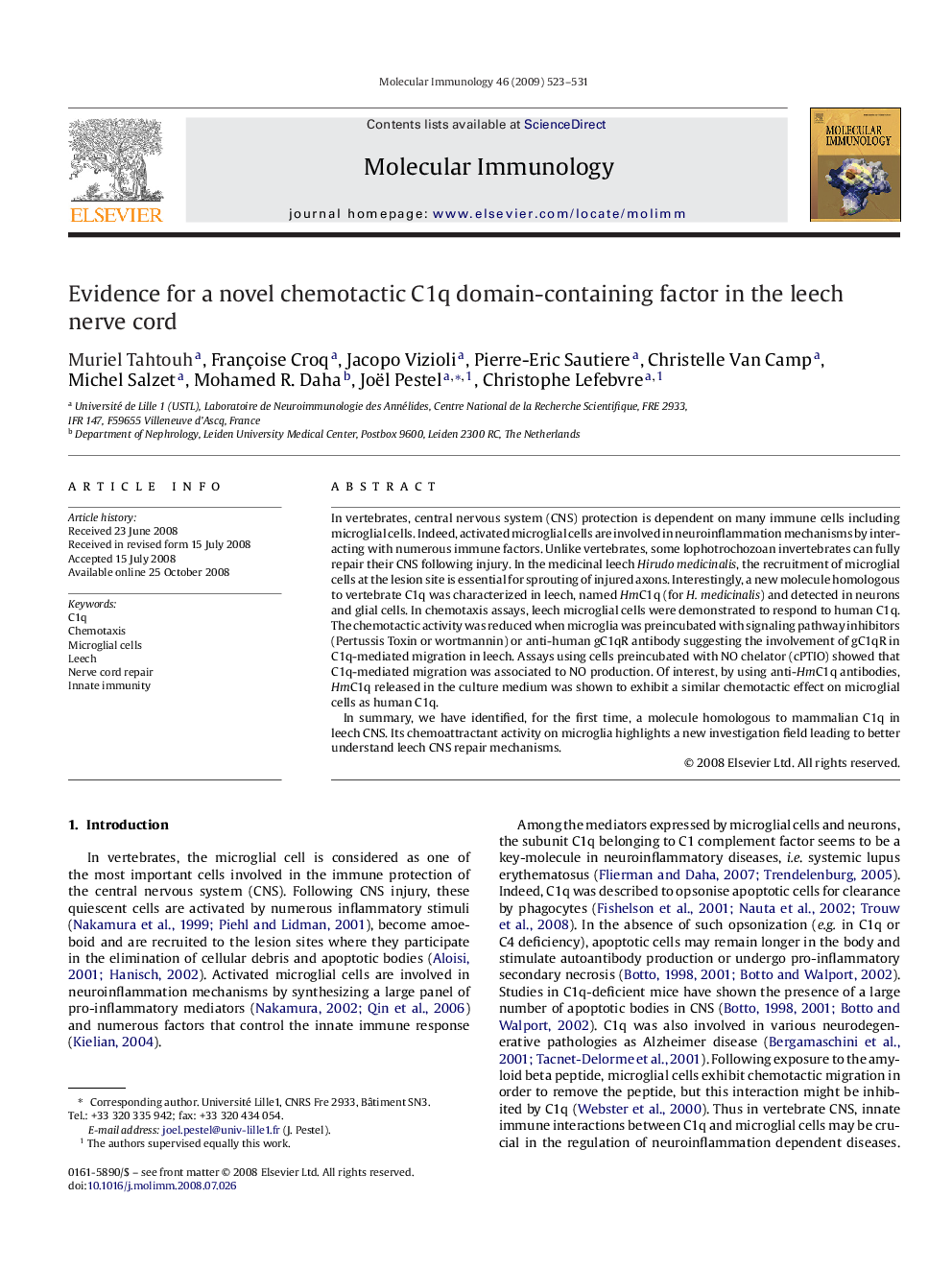| Article ID | Journal | Published Year | Pages | File Type |
|---|---|---|---|---|
| 2832325 | Molecular Immunology | 2009 | 9 Pages |
In vertebrates, central nervous system (CNS) protection is dependent on many immune cells including microglial cells. Indeed, activated microglial cells are involved in neuroinflammation mechanisms by interacting with numerous immune factors. Unlike vertebrates, some lophotrochozoan invertebrates can fully repair their CNS following injury. In the medicinal leech Hirudo medicinalis, the recruitment of microglial cells at the lesion site is essential for sprouting of injured axons. Interestingly, a new molecule homologous to vertebrate C1q was characterized in leech, named HmC1q (for H. medicinalis) and detected in neurons and glial cells. In chemotaxis assays, leech microglial cells were demonstrated to respond to human C1q. The chemotactic activity was reduced when microglia was preincubated with signaling pathway inhibitors (Pertussis Toxin or wortmannin) or anti-human gC1qR antibody suggesting the involvement of gC1qR in C1q-mediated migration in leech. Assays using cells preincubated with NO chelator (cPTIO) showed that C1q-mediated migration was associated to NO production. Of interest, by using anti-HmC1q antibodies, HmC1q released in the culture medium was shown to exhibit a similar chemotactic effect on microglial cells as human C1q.In summary, we have identified, for the first time, a molecule homologous to mammalian C1q in leech CNS. Its chemoattractant activity on microglia highlights a new investigation field leading to better understand leech CNS repair mechanisms.
